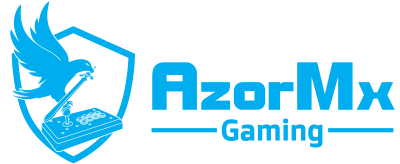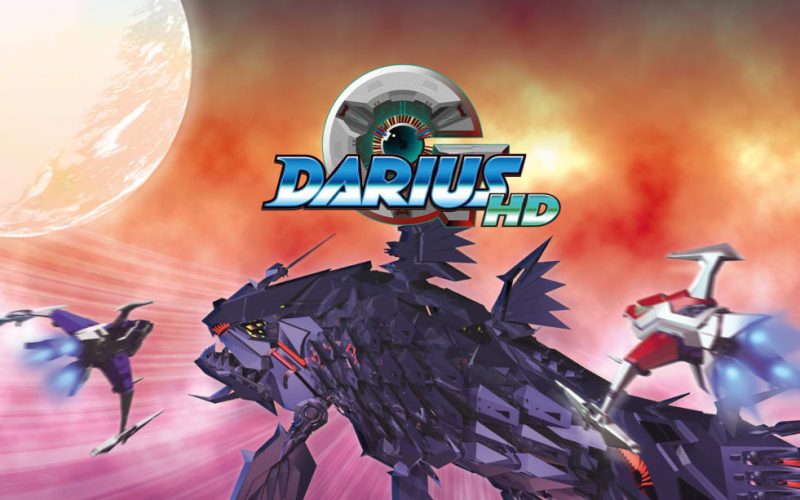As a long running series, Darius is not a stranger to innovation and formula changes. Even though the basics of the series like giant fish and the Silver Hawk progression remain, there have also been attempts to change the formula and add new mechanics. Darius Gaiden introduced us to the concept of capturing minibosses. Dariusburst made prominent use of the burst beam for beam battles. Right there, in-between, lies G-Darius, featuring both the beams and the captures.
There is definitely a lot to look forward to in this G-Darius port! As a game, G-Darius is regarded by many as one of the best entries in the franchise. As a porting studio, M2 has time and again proven that they are one of the best, if not the best, studio to entrust your porting duties. When these two come together, there really isn’t anything capable of stopping this juggernaut of a game!
Publisher: ININ Games
Platform: Nintendo Switch
Release date: September 28, 2021
Price: $29.99
Tate: Ehmm… I guess?
G-Darius HD is a horizontally scrolling shmup. In terms of main Darius releases, G-Darius was released after Darius Gaiden. It features improved graphics and sports more of the 3D cinematic flair that was popular during the PSX era. This port in particular contains the original game in its pixelated polygon natural state, but also contains an HD version that upscales the graphics for a beautiful display on modern screens.
Gotta catch ’em all
The main addition to G-Darius is a vastly revamped capture system. Unlike Darius Gaiden, G-Darius let’s you capture almost any non-boss in the game. The capture system is limited by a resource known as capture balls. At any point, you can throw a capture ball and turn an enemy into an allied ship. The captured enemy will fly alongside you and attack in its own particular way.
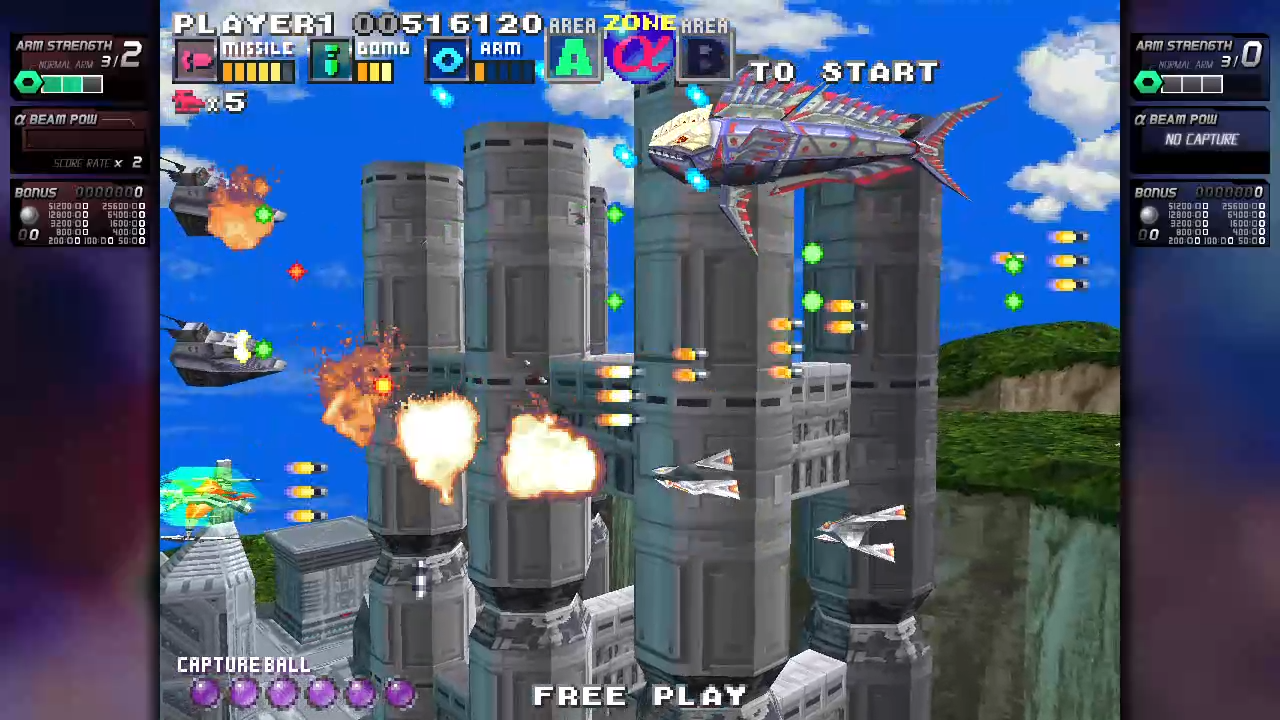
In a way, the capture system reminds me of pokemon. Part of the experience is knowing the enemies and how they will fight when they are at your side. By learning about all the enemies, you can figure out which can adapt to your playstyle and make you a better player. Or maybe you can just snag the prettiest enemy, I won’t judge you.
But a fully fledged capturing experience wouldn’t be complete without a handy gallery to fill out! Just like a certain dex, G-Darius HD has a collection tab that you can access at any time and which will fill up as you capture different types of enemies. But that’s not all, it will also display handy images that showcase their firing types and a list of stages where said enemy appears. Hey, I did say you should catch them all!
Arcades and fighting games
Out of all the possible enemies to capture, minibosses are by far the most unique to use. They can’t be captured as easily as conventional enemies. Minibosses all carry a golden mask that will deflect your capture ball. In order to capture them, you must damage this mask until it falls off and then throw your capture ball. This golden blocker isn’t specific to the minibosses, you will find throughout your gameplay that other objects are golden to show that they deflect your capture, so it’s good to keep that in mind.
Minibosses aren’t just special because they have masks. The reason they really stand out is because they have “secret” attacks. These attacks share a lot of similarities with fighting games, as most of them are triggered by executing complex commands. The hadouken motion, the shoryuken, even a half circle forward will trigger special attacks with certain minibosses. You can always check these inputs from the gallery. Hell, there’s even a miniboss that has the infamous “pretzel”.
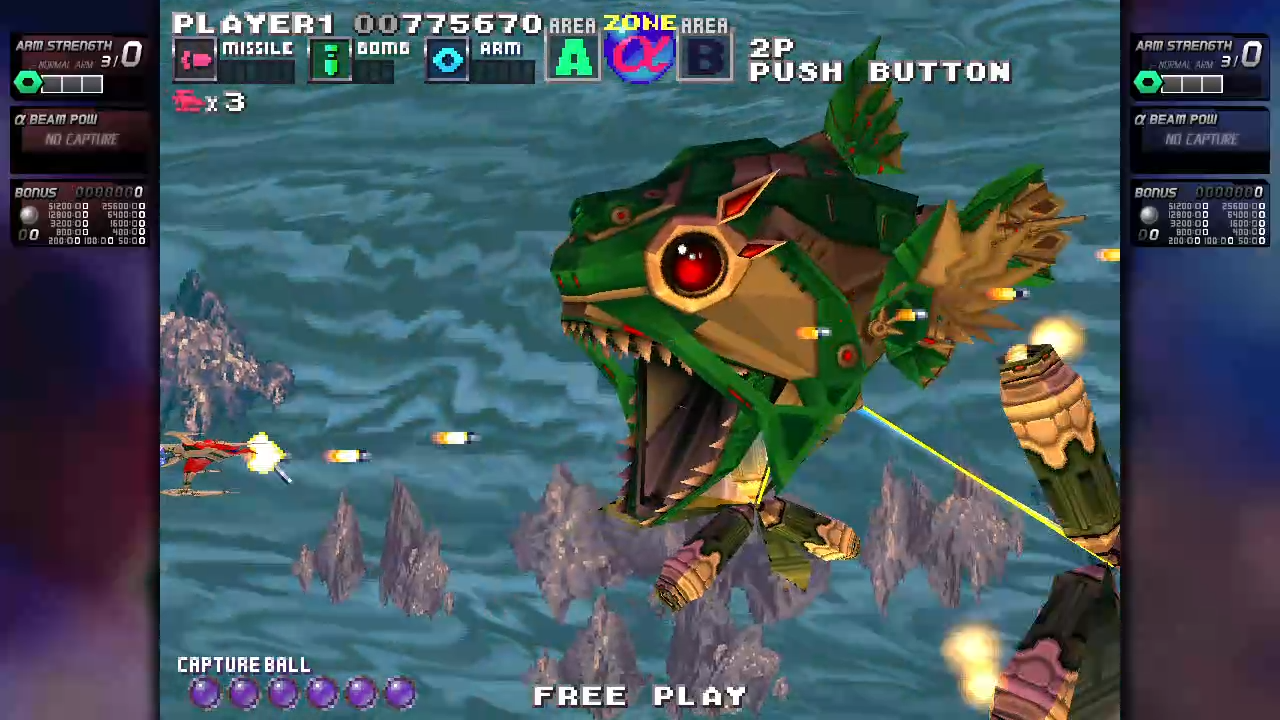
Super Saiyan Combat
Beyond having enemies assist you in battle, there are additional ways in which you can use your captures. For one, you can decide to explode your currently captured enemy to damage the enemies on-screen. By all intents and purposed, this is your standard bomb with extra steps.
The really cool usage of enemies is to sacrifice them to unleash a giant alpha beam. You can do this at any time by holding the charge button and releasing at the maximum output. It will decimate any enemies that come in contact with it. Even better is that bosses also shoot their own alpha beams! If your beam collides with theirs, an epic beam battle will ensue. By rapidly pressing the attack button, you can overpower their beam and unleash a devastating counterattack. Luckily for us, there are turbo buttons already mapped to this port, so winning is extremely easy!
As you play G-Darius, you will notice that bosses have some very intuitive tells that signal when they are about to fire their alpha beam. I’m not just talking about seeing the charge itself, but rather that enemies will cycle their attack patterns and if they summon capturable enemies, it means a beam is incoming. I really appreciate that G-Darius doesn’t put you into a situation that you can only win with a ton of foresight and careful gameplay. Instead, it gives you a fair chance (but not an easy one) to fight fire with fire. And fighting is definitely necessary! It feels like night and day fighting an enemy without the alpha beam and fighting with it.
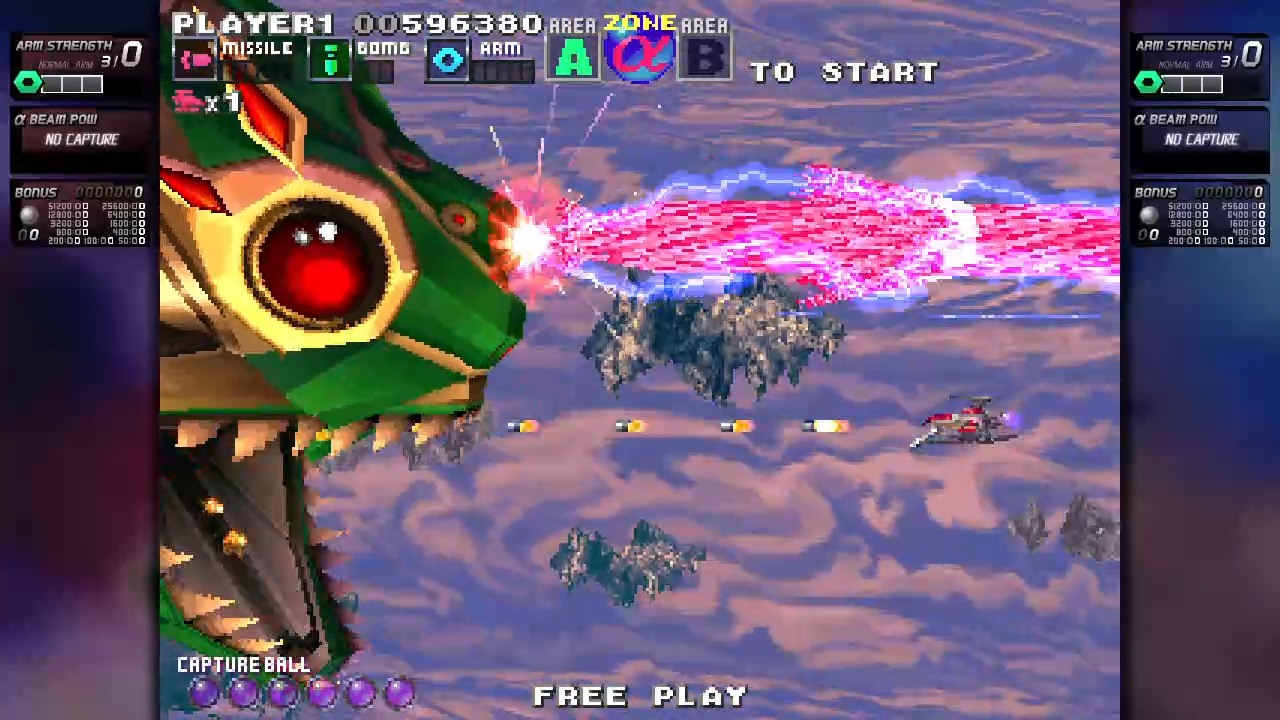
Alpha counter!
Apart from being totally badass, the alpha beam is your main mechanism of scoring. When you unleash the beam, a score multiplier will be applied to your hits all the way to x4 on regular alpha beams. If you use a miniboss, then it goes up to x6. But that’s not all! If you finish off a boss using the alpha counter, then you will also gain a huge score boost!
As you can imagine, proper usage of the beam and a decent judgement when it comes to utilizing minibosses is paramount to success. Choosing to use that juicy x6 multiplier on a dense enemy wave or saving it for a boss is a decision you have to make in order to maximize your score. Of course, saving the minibosses also means making sure they don’t get destroyed by the enemy fire before even reaching the end boss.
Aside from mowing everything with huge laser beams, there are other ways of getting high scores. Obviously you have to beat the enemies, but what’s not obvious is that you get a score bonus for defeating an entire formation. There’s also the gray score orbs hidden around the level. Neither of those earns as many points as a proper alpha beam, but every little bit helps.
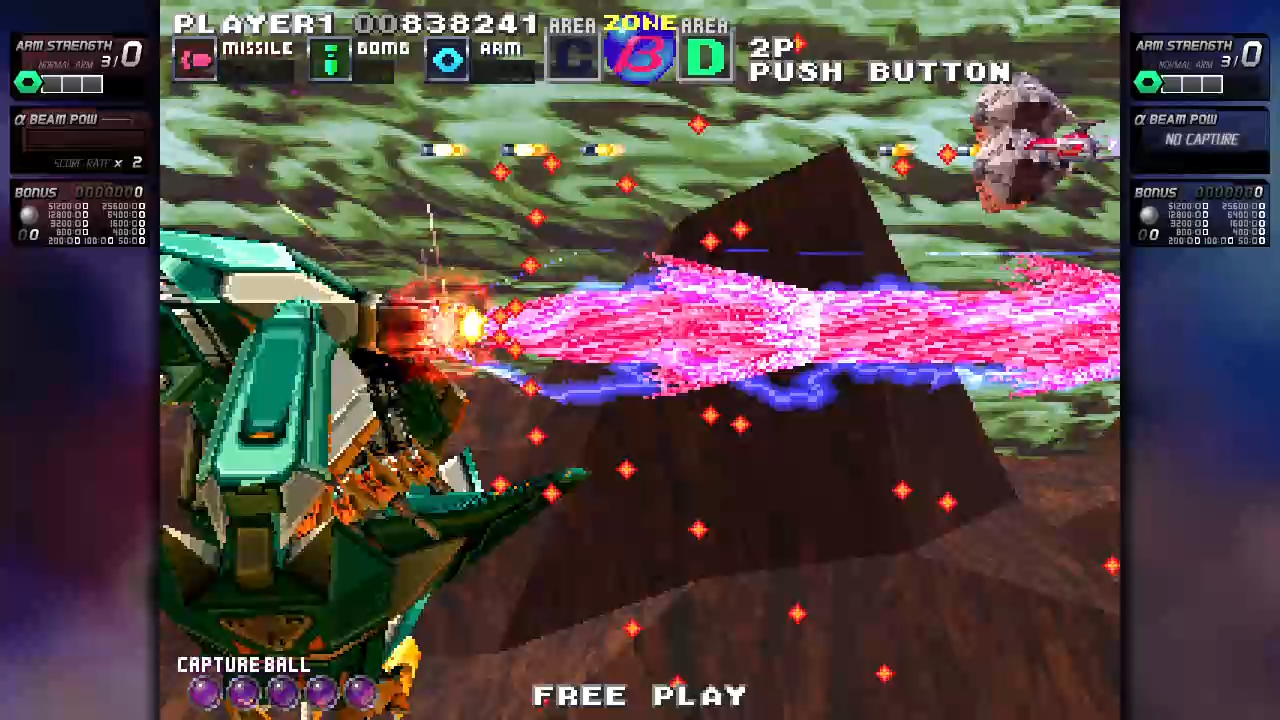
Exponential stage growth
G-Darius features a familiar level progression for Darius enthusiasts. The classic formula of branching paths is back to let you make the game as hard as possible for you by going down, or easy by going up. I always appreciated how you can decide for yourself if the game is being too tough and adjust the difficulty on your own by choosing your path.
New to this game is the ability to branch out mid-stage. This change effectively doubles the amount of routes you can take in the game. Depending on your route, you will be able to capture different enemies. The end boss will be changed as well. Even though the boss itself is the same, it will feature changes and attacks specific to the zone you chose.
The way to choose mid-stage paths is a callback to the original Darius. Instead of straight up being a menu, the screen is divided by an horizontal line on the middle of the screen. Stay on the path you wish to take, and the level will branch out there.
Directed by Michael Bay
Something that stood out fo me is how cinematic G-Darius feels. Perhaps it might be more of the product of an era, but the way G-Darius uses cinematic angles to show the action and introduce bosses is mind blowing! We all know Darius loves to warns us about incoming bosses and displaying their names. However, G-Darius goes one step above and showcases the massive enemy fish by showing them destroy something and using camera angles to make them seem even more destructive.
My favorite intro is how Absolute Defender’s entrance completely baits you. Originally, you are presented with a different boss, but AD just comes in and takes in the other boss’ attacking without batting and eye and then counterattacks to show just exactly how the food chain works under the sea (space sea?)!

Unfortunately, some of the more cinematic aspects of the game just get in the way of the action. One of my biggest pet peeves is just how deceiving the layering feels with regular enemies. Keep in mind that this is a 1998, so visual clarity hasn’t reached the level of refinement we see today. This shows just by how hard it is sometimes to discern if an enemy is on the foreground or the background, and whether if will kill you or just fly away. Not even the HD version of this game can help with this, and unfortunately you just need to learn by doing… or dying.
Explosions, also by Michael Bay
Speaking of clarity, during the later levels I just felt that the screen became extremely chaotic. Chaos isn’t a bad thing, as it is fun to navigate dangerous screens. But G-Darius is a fast game, so there were many incoming dangers that felt harder to anticipate with just how much is going on at the screen at most times. It looks pretty, that’s for sure, but some of the beauty can obscure incoming bullets or enemies approaching from the background.
Ultimately, the lack of clarity should be something that bothers me, but I found it weirdly nostalgic. G-Darius makes me think about Einhander… a lot! It’s probably just a shallow similarity with polygon graphics and the aesthetics of the enemy bullets, but damn do I feel like a kid again!
Oh yeah, speaking of bullets, G-Darius also features those long laser like bullets that I hate to dodge. Those always make me uncomfortable.
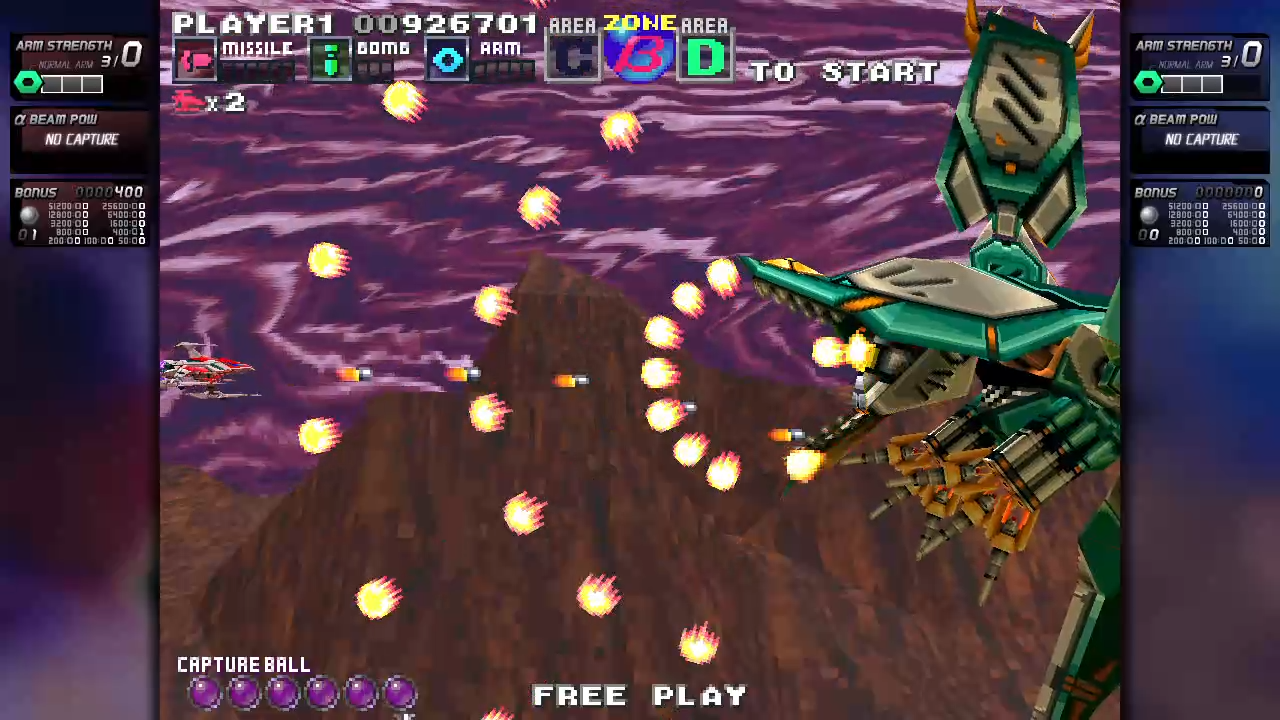
Master porting
So that’s pretty much G-Darius as a game, but I really want to highlight some of the features added by M2 in this HD port. I don’t mean to be mean to other porting studios, but damn does it feel like night and day to see Dariusburst and G-Darius side by side.
Pretty much everything that I loved from the Darius Cozmic Collections is back! G-Darius features robust customization options when it comes to tweaking the screen and arranging stuff to your personal preference. You have complete freedom to remap your controls and even set the frequency of auto-fire. You can add or remove gadgets, although these are very limited when compared to the Cozmic Arcade Collection.
What really caught my attention was the implementation of save states. It’s hard to go wrong with them, just capture the moment and reload if needed, but G-Darius showed that there are ways in which it can be much better! What I’m referring to is the auto-save mechanism.
It’s actually not too complicated. G-Darius creates auto-saves when you are choosing a zone, when you are choosing the mid-stage branch and before starting a boss fight. Only the latest 3 events are available. But even though it’s a simple addition, and a very obvious one at that, it serves a greater purpose for G-Darius. By being able to rewind to mid-stage branches, you can traverse both zones and fill your capture gallery. Same with stage selection. For bosses, you can be sure to practice encounters as much as possible to maximize your score. Memorizing the patterns, the opportunities to capture and the alpha beam showdowns are all musts in order to get max score!
I don’t think we talk about this enough, but G-Darius HD’s filesize is also surprisingly low. I appreciate shmups that don’t take GBs of storage. Just an underrated perk that I always value immensely.
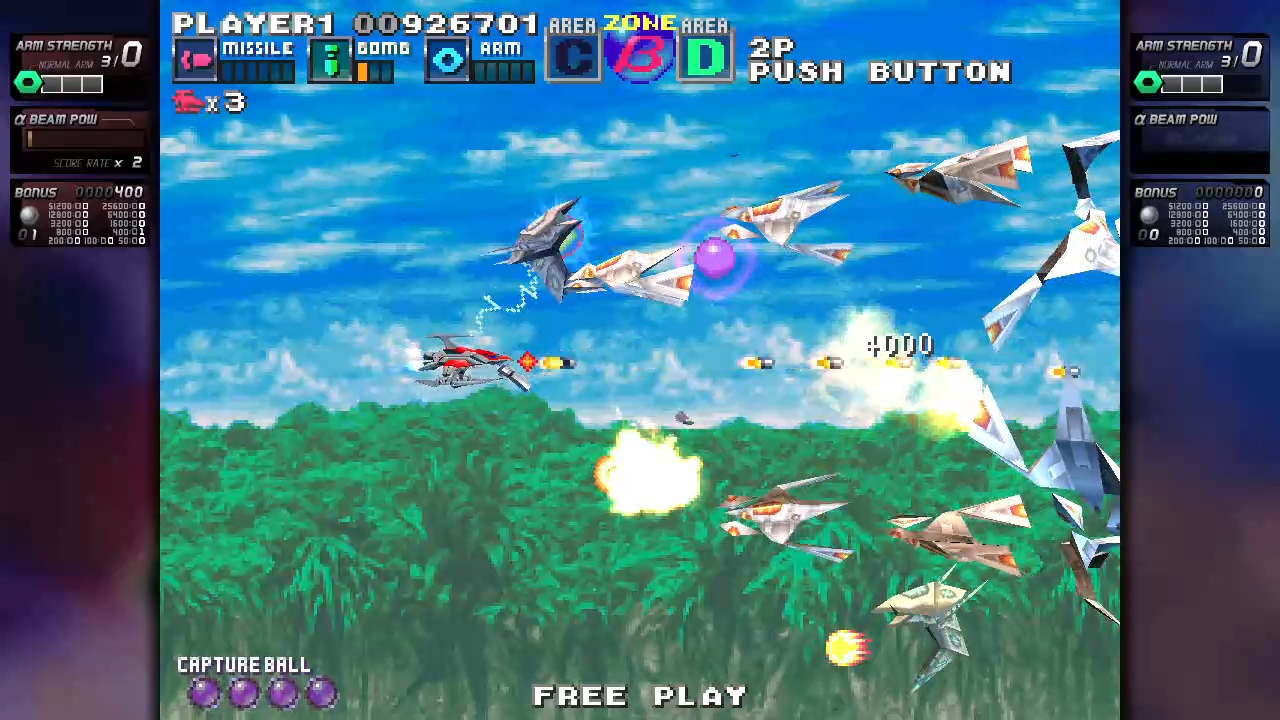
Go go no gadgets
Where this collection falls flat is with the gadget selection. Unlike the Cozmic Arcade Collection, the only gadgets available are a detailed breakdown of arm strength, bonus score and alpha beam status. Don’t get me wrong, these are useful and much needed, but there’s so much more that could have been added.
Notably absent are the arcade plates, boss analyzer and stage visualization. While the arcade plates were more of a fun addition, they helped drive home the arcade feeling. The boss analyzer is probably the one I miss the most, as knowing the enemy HP would have been amazing to properly farm bosses and to get ready for alpha beams before an enemy perishes. I also wonder why Darius Gaiden’s miniboss display is absent. Knowing the inputs for the special attack would have been very useful, instead of having to visit the gallery at all times.
What’s more is that some more information regarding the zone for captures would have helped as well. Even something basic like displaying a couple of capturable enemies would have really helped, especially for those encounters that are specific to the mid-stage branches. With G-Darius being a game that plays on a single display, there is a significant amount of screen space when using a widescreen console like the Switch.
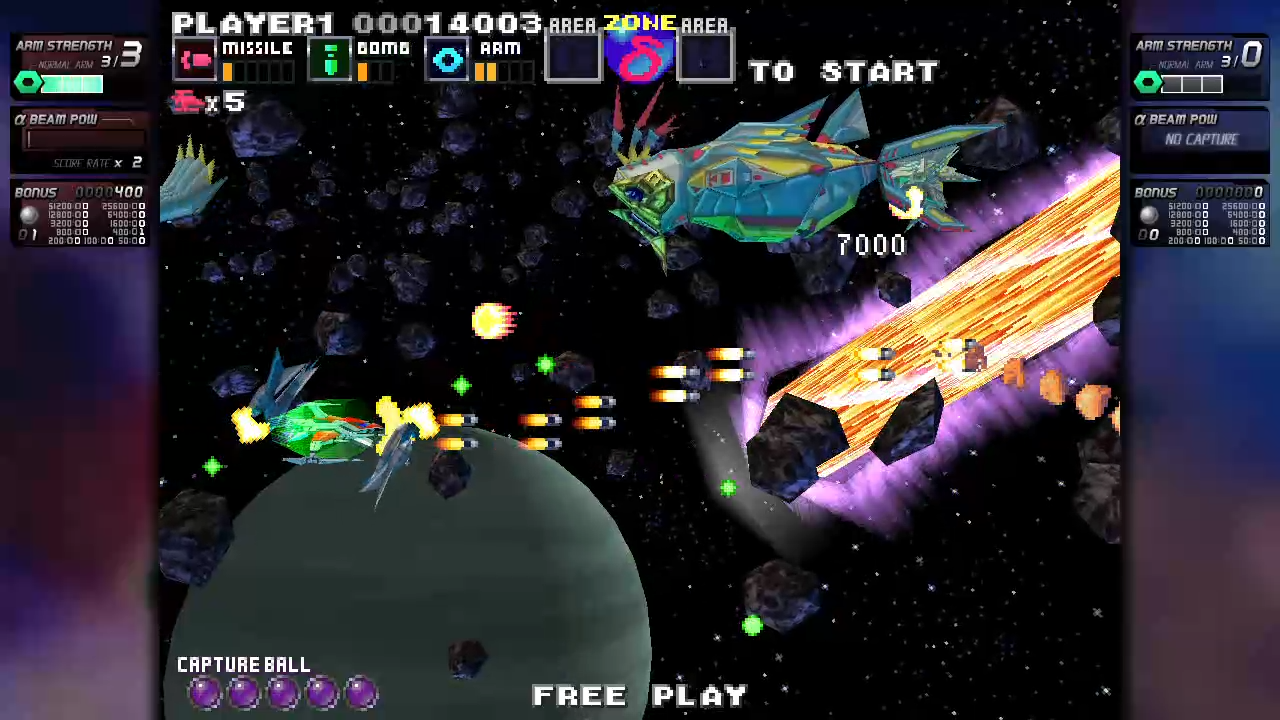
The cabinet that fights back
Returning with a vengeance is the cabinet’s body sonic vibration system. Thanks to the Switch’s HD Rumble, G-Darius can emulate the vibrations that occur during gameplay. If you think back to the cinematic aspects of this game, you can imagine how much the vibration effects add to the experience.
However, G-Darius goes hard, and I mean really hard when it comes to vibrations. Boss encounters are basically non-stop rumbles. Even though you can tone down the strength of the vibration, I found boss encounters to become inconvenient after a while. G-Darius also features longer encounters than your average Darius game. Boss fights seem to survive a long time, especially if you don’t have alpha beams to fight back. This had me wonder if I should just turn off the vibrations entirely. I love them during gameplay, but they are way too much during the bosses. Vibration is an all or nothing toggle, so thread carefully.
Medals of honor
Finally, G-Darius HD adds a feature that was included on other releases, but not on the Switch version. I’m talking about achievement support. It’s easy to see how this happened, as the Switch doesn’t support achievements in the same way PS or Steam do. In G-Darius, you can earn in-game achievements. Although the Switch leaves this decision up to the developers themselves, I find myself liking these custom achievements much more. The way the pop-ups are customized always feels much more at home than system level notifications.
Sadly, you can’t brag about these achievements to your friends unless you open up the game and show them. Nevertheless, the in-game achievement provides a healthy selection of accomplishments to strive for. If anything, I think the achievements are on the conservative side, with medals for standard progression and capture collection. Luckily, these achievements list the “constraints” and let you know if you can use save states, multiplayer or difficulty settings to unlock them.
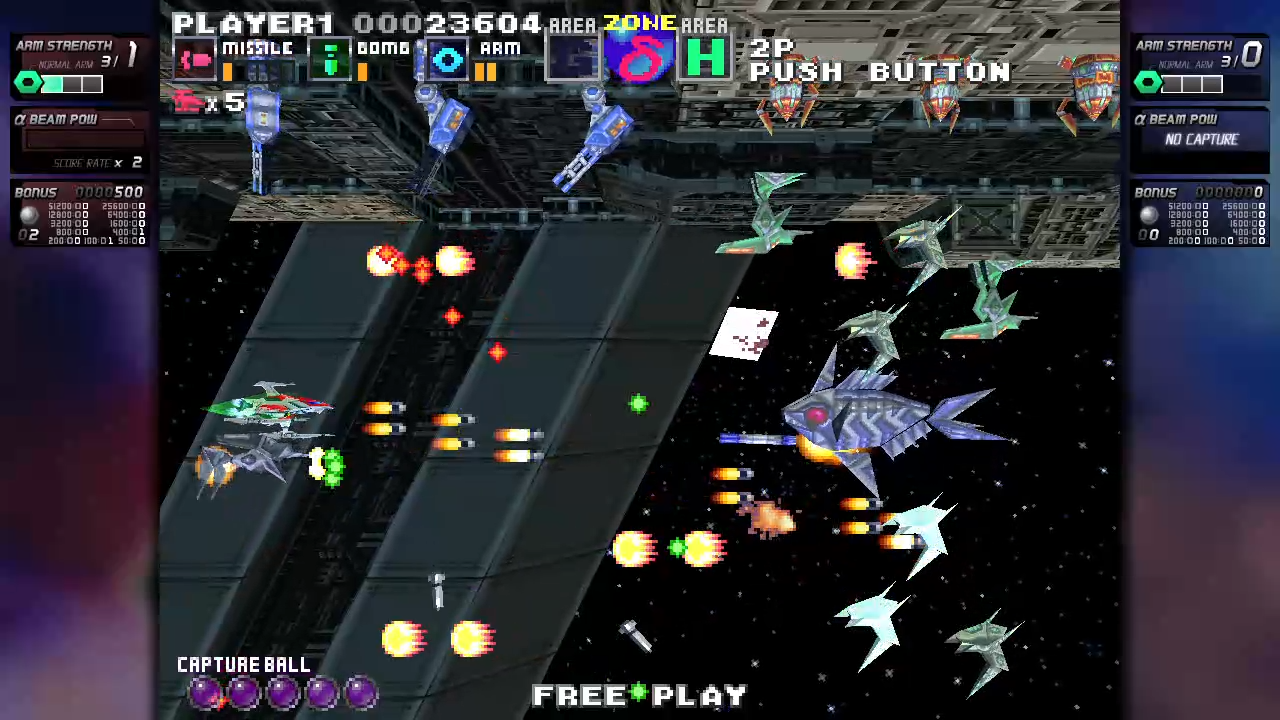
Last Words
In the end, G-Darius HD is a match made in heaven. It combines arguably the best Darius game with one of the best, if not THE best studio you could ask for for a port. Once again M2 shows us how to properly re-release shmups and continually raise the bar for how new releases should be. G-Darius isn’t a perfect game, but damn is it a really fun one to play!
The only thing I can say against the game is that it doesn’t feel as feature rich as other games. Sure, the porting enhancements are all there, but there isn’t much to do outside of the main game. Even though this might be the best Darius game, it’s hard to place it above the Cozmic Collection, just because of the sheer amount of content, both base and bonus, that it provides and the inclusion of the other arguable best Darius game: Darius Gaiden.
THE RANKING SO FAR:
- Crimzon Clover – World EXplosion
- ESP Ra.De.
- Ikaruga
- Psyvariar Delta
- Darius Cozmic Collection Arcade
- G-Darius HD
Devil Engine- Rolling Gunner
- Mushihimesama
- Blazing Star
- Jamestown+
- Raiden V: Director’s Cut
- Darius Cozmic Collection Console
- Super Hydorah
- Tengai
- Steredenn: Binary Stars
- Stardust Galaxy Warriors: Stellar Climax
- Sky Force: Reloaded
- Strikers 1945
- Black Paradox
- R-Type Dimensions EX
- Sine Mora EX
- R-Type Final 2 (Switch version)
- Shikhondo – Soul Eater
- Dariusburst Another Chronicle EX+
- Freedom Finger
- Ghost Blade HD
- AngerForce: Reloaded
- Aero Fighters 2 (ACA Neogeo)
- Q-YO Blaster
- Lightening Force: Quest for the darkstar (Sega Ages)
- Pawarumi
- Red Death
- Crisis Wing
- Task Force Kampas
- Switch ‘N’ Shoot
- Last Resort (ACA Neogeo)
